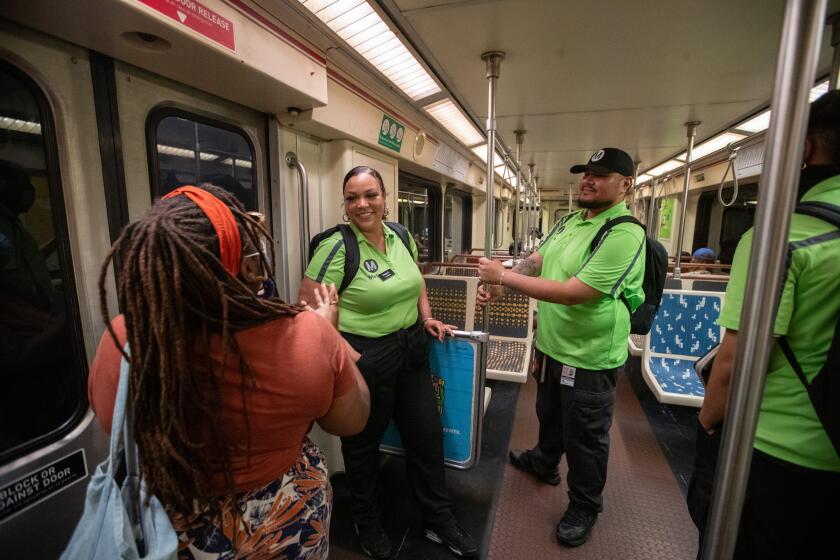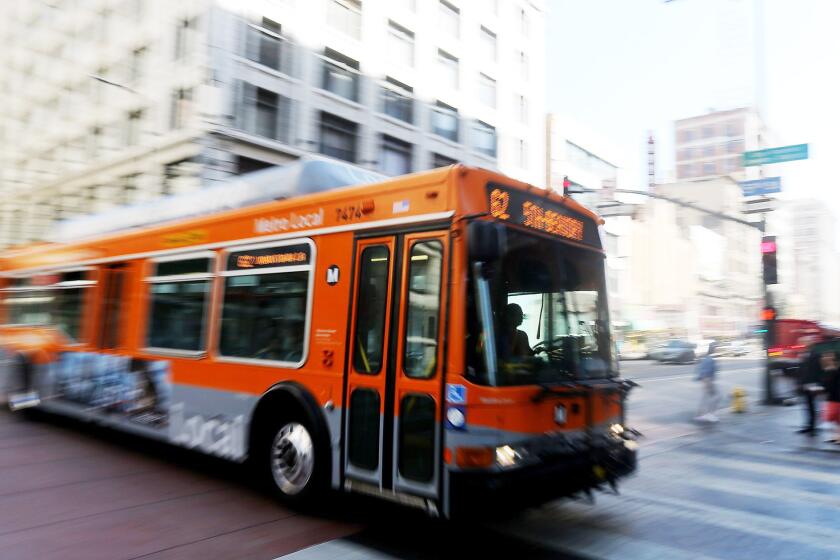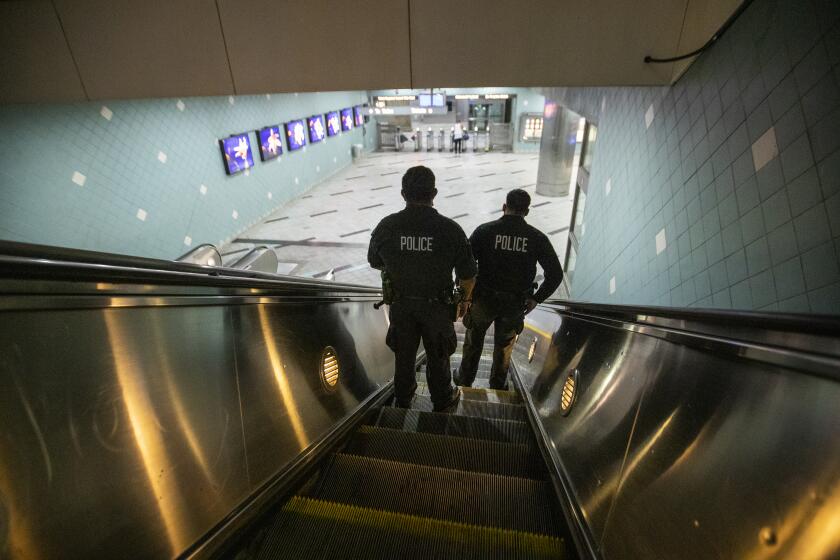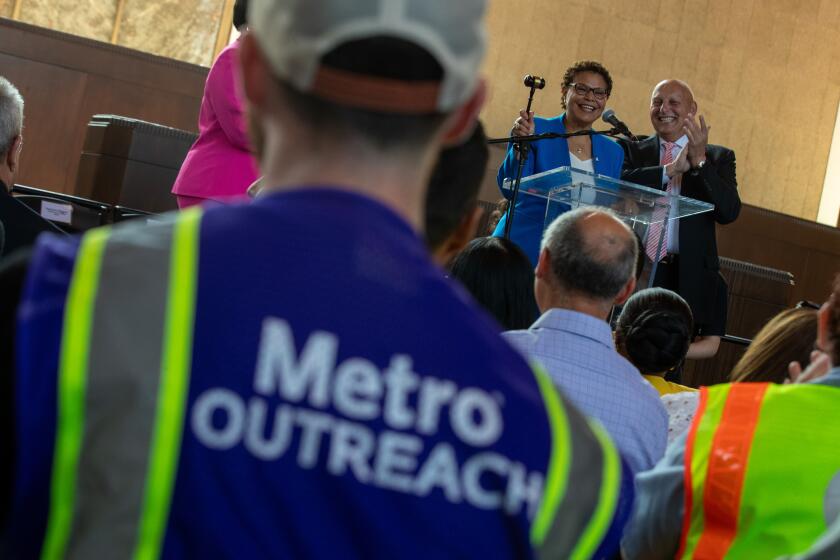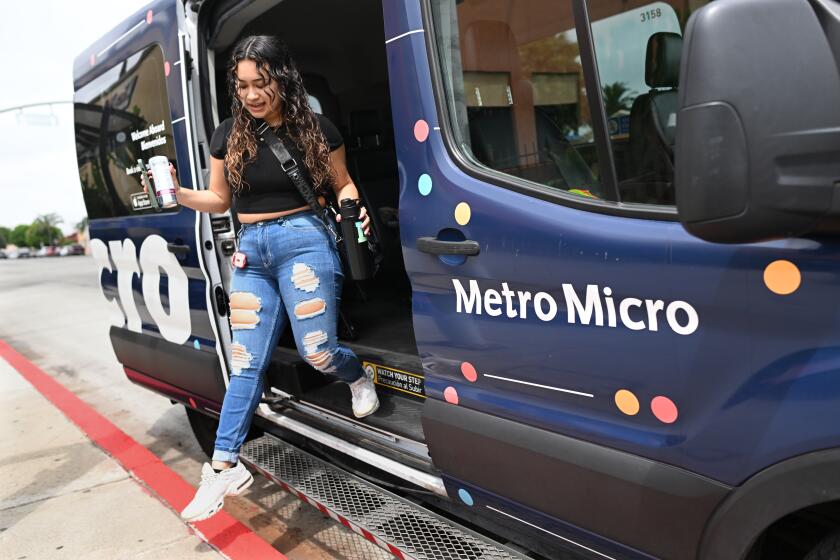Opinion: They traveled on Metro for a week and loved it. Can two dozen German journalists be wrong?
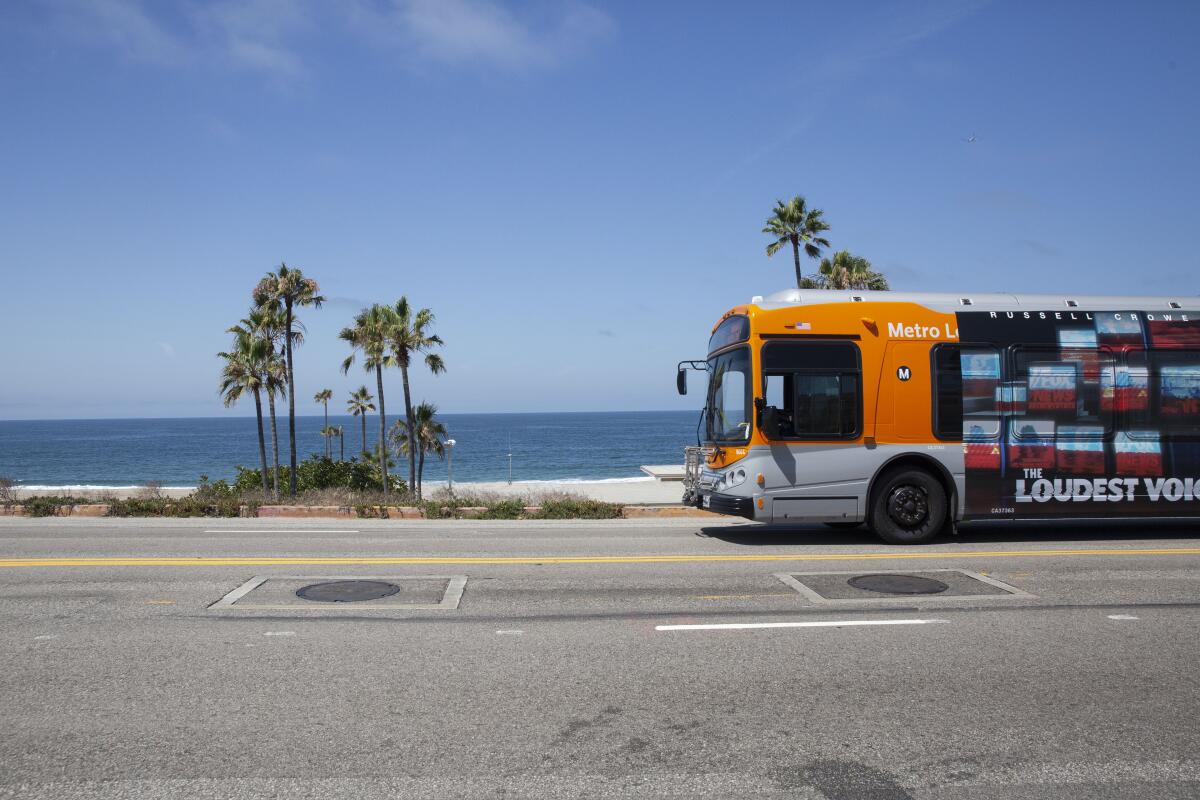
- Share via
I just spent a week riding Los Angeles buses and trains, along with 25 broadcast journalists from Germany, all of us in L.A. for a mid-career fellowship program. When I told my local contacts we planned to take public transit to dozens of meetings and events — three to four a day, from the Westside to downtown and beyond — they seemed shocked and offered dire warnings along the lines of “are you out of your mind?”
But their fears of lurking danger, little reliability and less comfort turned out to be wrong, albeit well intentioned.
There are more than 300 transit ambassadors riding the Metro transit system. They could become a permanent part of the transit experience.
We rode a big selection of Metro’s 120 bus and six train lines. With surprising ease. Safely. Happily. And on time, despite Southern California’s legendary urban sprawl. Our public transit journeys required a bit of advance planning and lead time but they were a fraction of the cost, to our wallets, to our nerves and above all to the environment, compared with the alternative a few of us sometimes used — Uber.
I’ve lived for decades in Berlin, where public transit is a widely admired given, so I’m used to traveling day in and out without a car, and I can now confidently say Metro doesn’t deserve its bad rap.
It’s certainly true that New York and Washington, other cities where I lead fellowships, make it easier to get from A to B on public transit than L.A. But don’t underrate Metro.
Metro now has 40 miles of bus lanes in Los Angeles, with plans to reach 100 miles in the next few years. Getting buses out of traffic make service faster, more reliable and better for riders.
We got from a meeting in Beverly Hills to the next meeting on Skid Row in an hour on just one bus line — the 720 — that picked us up a few blocks from Rodeo Drive and dropped us off outside the Union Mission on San Pedro Street. Even some L.A. natives were astonished to learn that the same bus line connects those two different worlds just 10 miles — 16 bus stops — apart.
We also got to events in good shape in Hollywood, Universal City, Santa Monica, Century City, Culver City, Glendale, Malibu and Pacific Palisades. Some of the especially hearty public transit riders among us arrived at a few of the more-difficult-to-reach appointments before those who resorted to Uber. Traffic!
On the buses, I met some chatty and friendly fellow travelers, and yes, I also encountered a few pretty messed-up riders, chatting gibberish and lost in their own distant worlds. I rode immaculately clean trains and buses and a few that looked and smelled scuzzy. Most rides were somewhere in between.
The LAPD want to arm officers on the Metro system with the BolaWrap, a nonlethal lasso-like weapon. The plan awaits approval by the Metro Board of Directors.
We’d been warned about violent crime, and as is true for big city transit systems everywhere, I have no doubt it’s a legitimate concern. But we encountered none, although on a late-night ride from downtown to Santa Monica, on a very clean but mostly empty E line train, there were some worrisome moments.
One passenger was clearly passed out, slouched over in his seat. Another shouted something unintelligible from time to time. Making such situations feel a little safer, there were often security guards or police at train stops and on buses; security cameras were ubiquitous.
Our most precarious moments came when we had to walk from buses or trains to our final destinations. It seems pedestrians are not something some Los Angeles drivers are accustomed to. I actually had to jump out of the way a few times as motorists got too close to sidewalks or bike lanes.
The mayor becomes chair of the Metro board at a time of big ambition and struggles. Low ridership and high crime continue to dog the system, as a massive infusion of tax money builds new lines and services in preparation for the 2028 Olympics.
Even during rush hour, we found ourselves, surprisingly, in half-empty buses as we zipped down express bus lanes past long lines of bumper-to-bumper traffic. I had to wonder why, in the face of climate change, were so many drivers still in cars? Why, in a city where people think out of the box more than in other places, is there so much angst about public transportation?
My German fellow travelers were as amazed as I was at the relatively good bus connections, the relatively high frequency along some of the main routes that crisscross the city, and the incredibly inexpensive price for it all — I got everywhere I needed to be on public transit and spent $18 for unlimited travel for the entire week.
We were using public transit so often that groups of us bumped into each other all over town, heading to fellowship and free-time destinations. It was usually easy to spot us because the buses were so empty. A few participants in the program even opted to take No. 4 bus to Santa Monica and then the Culver City Rapid 6 bus to LAX for their flights home.
Riders love the clean, quick, on-demand van service. But its costs are forcing difficult questions among transit officials faced with shrinking budgets and underserved riders.
In all, I took nearly 30 different bus rides and six train rides unscathed during the car-less week. I saw parts of L.A. I’d never seen before. I managed to get work and reading done on the hours I spent on buses. After the fellowship ended, I wrote this article while riding first on the E line from downtown and then on a bus to Venice.
Take it from me and two dozen other visitors from Germany: Los Angeles has an eminently usable mass transportation system, and from the construction we saw, it’s only going to get better. May it also become more popular with the locals.
Erik Kirschbaum is a Berlin-based freelance journalist and author. He is the executive director of the RIAS Berlin Commission, leading eight fellowships for about 130 broadcast journalists in the U.S. and Germany each year.
More to Read
A cure for the common opinion
Get thought-provoking perspectives with our weekly newsletter.
You may occasionally receive promotional content from the Los Angeles Times.
